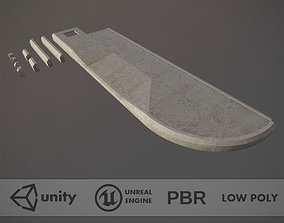

If both maps are used, they must have the same size to be merged successfully. In the Specular Reflections section, the metalness and the roughness values and maps are supported. Note: it is recommended to always set the base color weight to 1. If you use a map for the base color, then the base color weight is overrided to 1 for the export.Īlso if the base color map and the transparency map are used, they must have the same size in order to be merged successfully. In the Basic Parameters and Transparency sections, the base color weight, the base color and the transparency weight values are supported.Īnd you can use a map for the base color and the transparency weight (the base color weight map is not supported). When exporting, if a map is assigned to a parameter, the basic parameter value is ignored. Involved parameters are highlighted bellow. The Standard Surface Arnold material is exported to glTF format as a PBR material. Normal Bump map nodes are currently not supported.

Connecting a height map may yield to unexpected results. Note that glTF does not support height maps. A tangent-space normal map can be directly connected to the Bump input. The bump map (or normal map) and its weight are used. The diffuse roughness map is used as ambient occlusion. The emission map is assumed to be precomputed. This mean that emisson weight, luminance and Kelvin are not used. However, the exported emission color map is identical to the specified one in generic map. The exported emission color value is computed based on all 4 parameters: emission weight, color, luminance and Kelvin.

Like for base color and transparency, the basic parameter value is used as default value when binded map is not provided. In glTF format, metalness is stored in blue channel, roughness in green. In 3DS MAX, metalness and roughness maps are black and white images (R=G=B).

The metalness and roughness maps are combined together: It can be inverted to mean Glossiness - this also affects roughness map. The basic parameter value is used as default value when binded map is not provided: Note that the duration of this process scales with images size and may have a severe impact on export duration. The 2 maps must have same sizes to be merged successfully. The base color RGB and the alpha A are merged together into a single color RGBA: In glTF format, the transparency is expressed in alpha (alpha = 1 - transparency). The color of the transparency is ignored, as well as other parameters (depth, thin-walled, transparency roughness). Remember that in 3DS MAX, when a map is assigned to a parameter, the basic parameter value is ignored. Involved parameters are highlighted bellow and described in the following sections. The physical materials are exported to glTF format as PBR materials. Note that the conversion duration scales with images size and may have a severe impact on export duration.


 0 kommentar(er)
0 kommentar(er)
